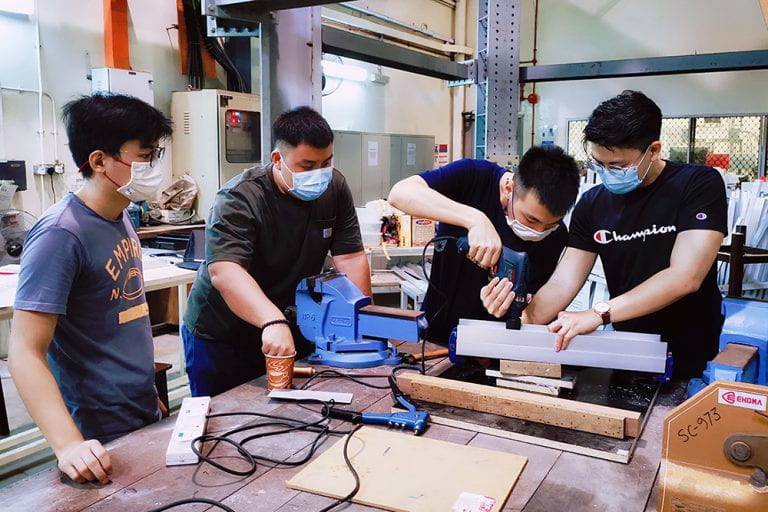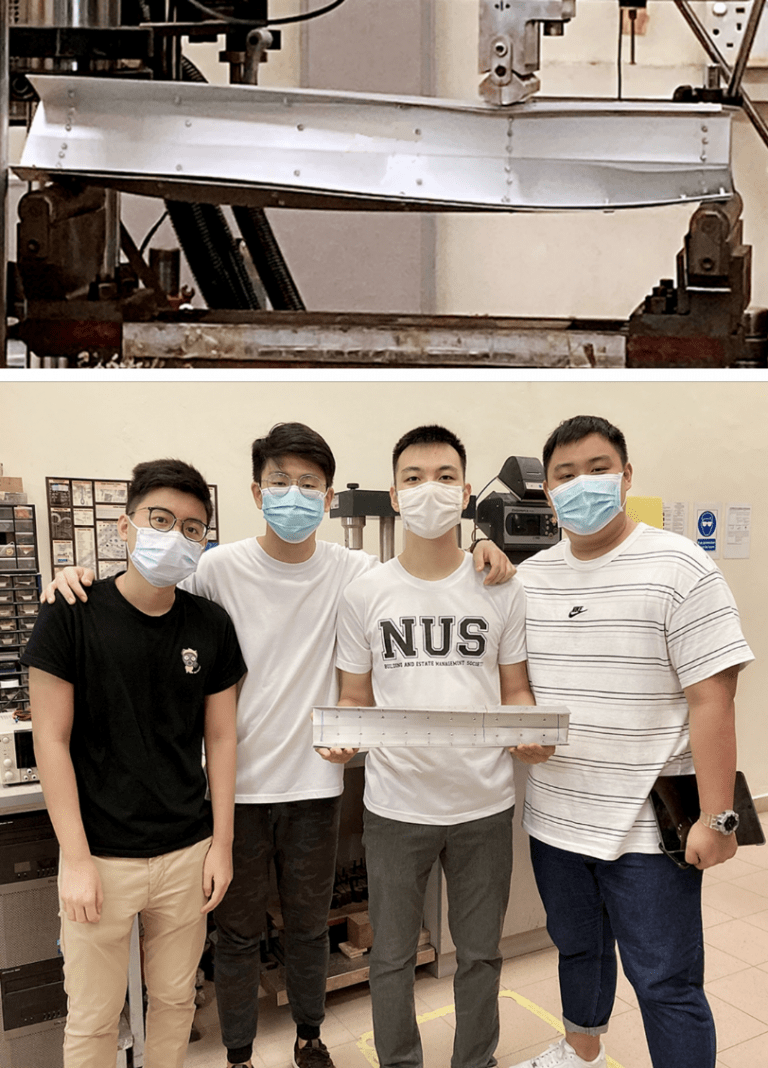DU Hongjian
Department of Civil and Environmental Engineering, Faculty of Engineering (FoE)
Hongjian describes his experience of moving his structural mechanics and materials module online and how incorporating hands-on practice activities within this revised format ensures his students are actively engaged to the module’s content.

Recommended Citation Du H. J. (2021, Aug 26). Online lecture and hands-on practice: A complementary approach to learning. Teaching Connections. https://blog.nus.edu.sg/teachingconnections/2021/08/26/online-lecture-and-hands-on-practice-a-complementary-approach-for-learning/
In the teaching and learning of STEM1 subjects, hands-on practice can benefit undergraduate students in various ways, including increasing motivation, reinforcing understanding, fostering critical thinking, applying theories to practice, and more (Carlson & Sullivan, 1999, Tsang et al. 2019). With COVID-19, most lectures had to pivot from the traditional face-to-face format to an online mode; students regarded the loss of hands-on activities as detrimental to their learning, and that the online hands-on activities paled in comparison (Johnson & Barr, 2021). From my teaching experience last semester, I realised that there is a close relationship between online lectures and hands-on practice—students can benefit the most from well-planned and well-implemented learning activities in a complementary learning mode.
Online lectures, no doubt, offer students many benefits: flexibility, efficiency, easy access, self-directed learning, and so on. Students enjoy the convenience coupled with the efficiency afforded by online learning. In an informal survey, I received very positive comments from students about the online lecture: “I can watch the lecture [five] minutes after I wake up with my feet on the bed”, “ability to rewatch and relearn”, “easy to watch at home without worrying about having to move around to various [lecture theatres]”, etc.
Despite students responding positively to aspects of online lectures, as mentioned above, they still face challenges in their learning such as having a weak understanding of complex concepts, lacking interest in the subject, and little opportunities to learn collaboratively. I found hands-on practice to be beneficial to addressing these challenges and enhancing student learning in my module CE2155 “Structural Mechanics and Materials”. Students can apply their skills to solve real-world problems through direct hands-on learning experiences. They can also be actively engaged and connected to the information taught in an online class. For example, the hands-on practice activity in CE2155 is a beam design competition (Figure 1). Students, in groups of up to four, design and fabricate the beams as per the requirement. More importantly, each group can observe how the beam performs under real loadings and analyse the deviation from their prediction if any (Figure 2). The whole process allows the students to work collaboratively and think critically. The design competition is complex, and no student can complete all the tasks on his or her own. Both the calculation and fabrication require students to collaborate in their respective groups by pooling together their knowledge and skills. At each step, students must think critically and construct their designs carefully to compete with the other groups.


At the end of the competition, I used Google Forms to collect anonymous student feedback. 99 out of 126 students participated in this informal survey.

In Figure 3, 94% of respondents indicated that the hands-on practice enhanced their learning in Structural Mechanics. Most respondents found the hands-on fabrication portion of the competition to be very helpful and enjoyable. As commented, “I can make something on my own”, “we can experience the process of making a beam and see how it changes under the load”. This beam-building process enabled them to visualise abstract concepts like stress, shear flow, and so on. In this way, students gained a better understanding of the basic mechanics by observing and doing. On the other hand, to solve the real problems, they need to pay closer attention to what is taught during the lecture. For example, “The calculation allows me to better appreciate the knowledge”, “The calculation taught me real-life application of my knowledge”, “I enjoyed seeing how our theoretical calculations ‘come to life’ when witnessing the loading of beams in the lab sessions. Very fun!!”, “Lab sessions were made more meaningful when prof went through key concepts before testing of beam”. Hence, online learning would attract more attention from students as they need to apply the knowledge gleaned from the online lecture to hands-on practice. This is how the virtual and in-class learnings can complement and benefit each other.
Furthermore, the hands-on practice provides an excellent platform for students to learn how to work as a team. To many students, my module is the only one that allows them to have face-to-face learning and hands-on classes. They enjoy the face-to-face teamwork and opportunity to build friendships. It is also beneficial for students who have never participated in a collaborative learning activity.
In summary, online lectures equip students with the necessary knowledge, while the hands-on practice allows them to better understand and apply the knowledge gleaned from the lecture as well as foster higher level of interest in the subject. They complement each other and both contribute to students’ learning.
 |
DU Hongjian is a Lecturer at the Department of Civil and Environmental Engineering, NUS. He aims to provide the best learning experiences to his students in both physical and virtual environments. He uses active and experiential learning to motivate and engage students in his classes. He is currently facilitating a learning community committed to interdisciplinary education, supported by CDTL, NUS. Hongjian can be reached at ceedhj@nus.edu.sg. |
Endnotes
- STEM stands for “science, technology, engineering, and mathematics”.
References
Carlson, L. E., & Sullivan, J. F., (1999). Hands-on engineering: Learning by doing in the integrated teaching and learning program. Int. J. Engng. Ed. 15(1), 20-31. Retrieved from https://www.ijee.ie/articles/Vol15-1/Ijee1041.pdf.
Johnson, J. E., & Barr, N. B., (2021). Moving hands-on mechanical engineering experiences online: Course redesigns and student perspectives. Online Learning 25(1), 209-219. http://dx.doi.org/10.24059/olj.v25i1.2465
Tsang, H. H., Du, H., & Haritos, N., (2019). Enhancing experience of learning engineering mechanics with blended and experiential components. In World Engineers Convention 2019. Melbourne: Engineers Australia, 2019, 1150-1164.

